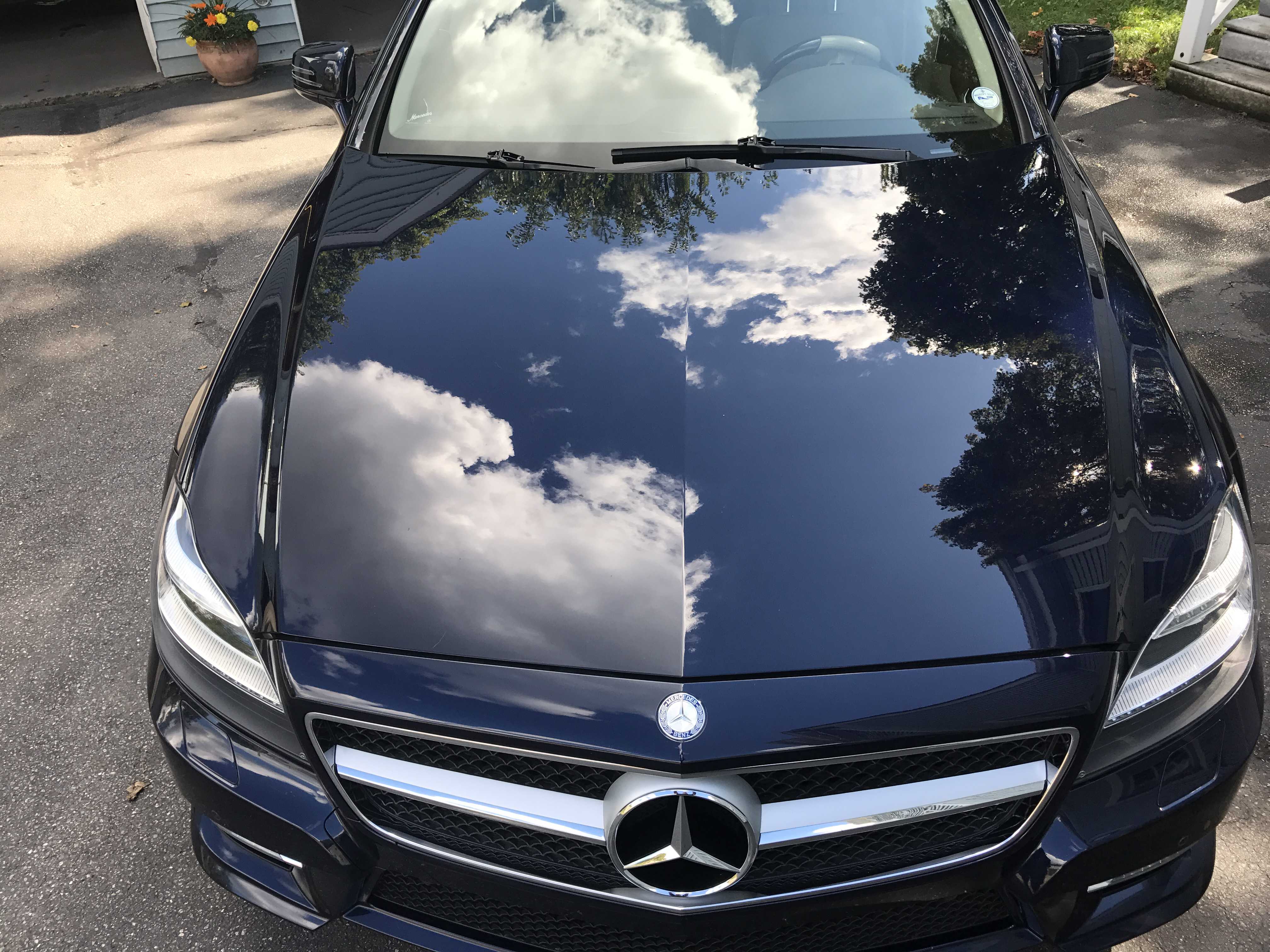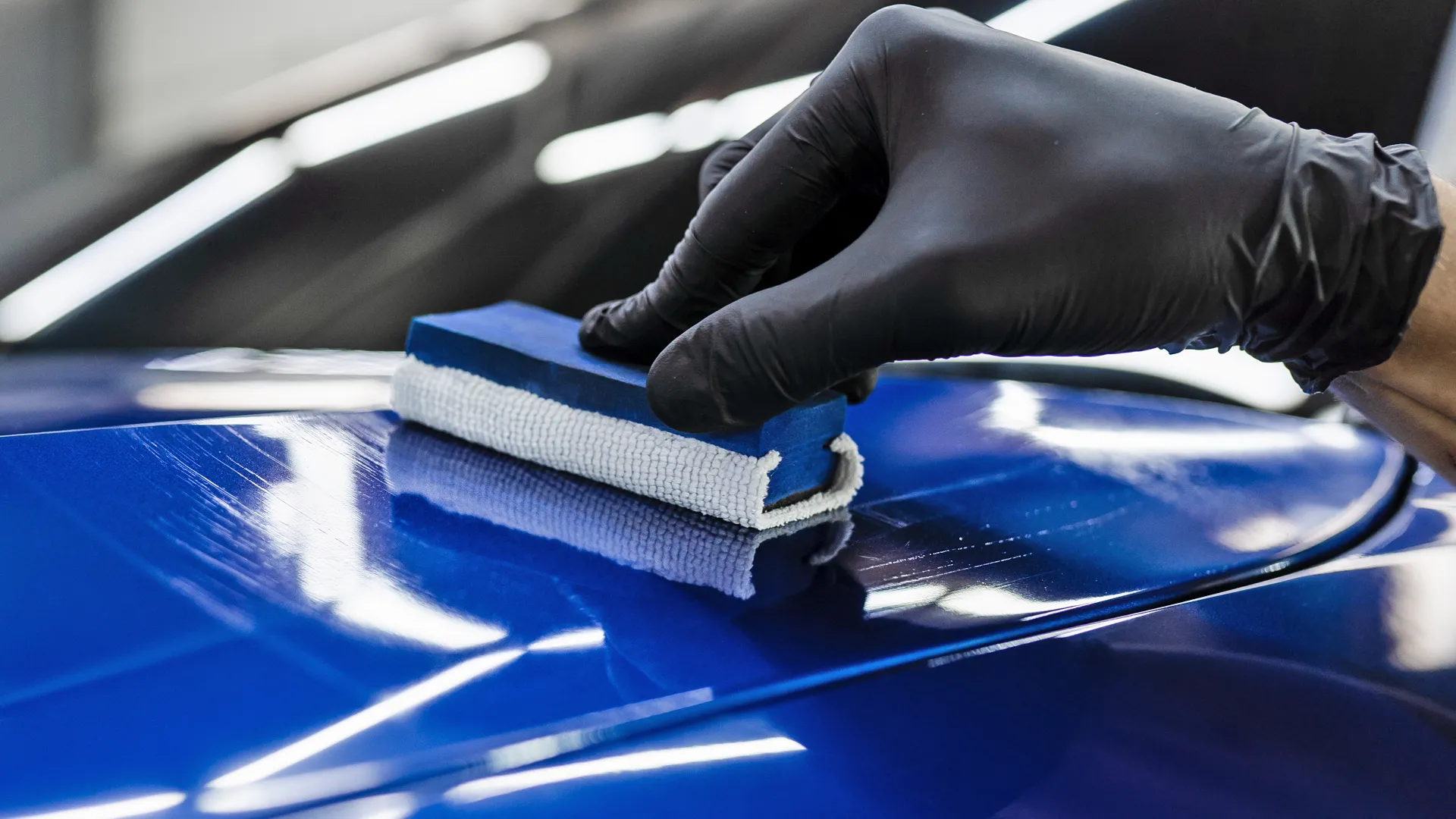A short guide to planning Ceramic Coating Newark professionally
Wiki Article
Discovering the Scientific Research Behind Car Ceramic Coating and Its Safety Features
The science of car ceramic coating offers a remarkable study in sophisticated auto defense. Composed primarily of silicon dioxide and polymers, these finishings form a durable bond with car paint. This communication improves durability versus ecological threats while supplying hydrophobic benefits. The details of how these finishings job and their long-lasting advantages stay less recognized. Ceramic Coating Newark. Unloading these information reveals why ceramic finishes are ending up being a favored option for car careWhat Is Ceramic Coating?
Ceramic coating is a liquid polymer that chemically bonds to the surface area of a car's paint. This advanced safety layer enhances resilience and offers remarkable resistance to environmental aspects. Unlike typical wax or sealers, which offer short-term security, ceramic finishings develop a lasting shield that can endure extreme problems such as UV rays, acidic pollutants, and extreme weather condition. When used appropriately, the coating creates a hydrophobic surface, triggering water to grain and slide off, which aids in maintaining the automobile's sanitation. Furthermore, it offers improved gloss and deepness to the paint, making the car show up even more polished and vivid. The application process commonly includes detailed surface area prep work, including cleansing and sprucing up, to guarantee peak bonding. Therefore, ceramic coverings are ending up being progressively preferred among car enthusiasts and those looking for to secure their financial investments, guaranteeing to maintain the vehicle's aesthetic allure while decreasing the regularity of maintenance.The Composition of Ceramic Coatings
The detailed formulation of ceramic finishings mainly is composed of silicon dioxide (SiO2), which is stemmed from natural sources like quartz and sand. This essential element provides the structure for the coating's sturdiness and protective qualities. In enhancement to SiO2, ceramic coverings commonly consist of various polymers and ingredients that enhance attachment, adaptability, and resistance to environmental aspects. These compounds function synergistically to produce a robust barrier against pollutants such as dust, chemicals, and UV rays.Furthermore, some formulations integrate titanium dioxide (TiO2) or other nanomaterials, which can boost the coating's hydrophobic residential or commercial properties, leading to improved water repellency. The accurate make-up can differ considerably amongst manufacturers, influencing performance and long life. Inevitably, the mix of these components culminates in a safety layer that not just boosts the visual appeal of cars but additionally offers to extend their life-span by securing the surface area from possible damage.Just How Ceramic Coatings Work
Understanding how ceramic coverings work involves exploring their chemical make-up, which adds to their protective top qualities. The application procedure is important for achieving excellent outcomes, while long life and resilience aspects identify the coating's efficiency in time. Together, these elements highlight the benefits and performance of ceramic finishes for vehicle security.Chemical Composition Explained
While many car proprietors seek long-lasting security for their automobiles, the chemical structure of ceramic coverings plays a vital function in their effectiveness. These layers mostly include silicon dioxide (SiO2), which is acquired from all-natural minerals. This substance creates a solid bond with the vehicle's paint, creating a sturdy, protective layer. Additionally, several ceramic finishes have titanium dioxide (TiO2), boosting their hydrophobic buildings and resistance to UV rays. The existence of polysiloxanes can additionally improve versatility and longevity. Together, these aspects add to the coating's capability to repel water, dirt, and impurities, while also providing a high-gloss finish. Understanding this chemical foundation aids car proprietors value the robust defense used by ceramic coatings.Application Process Summary
Applying ceramic coverings involves a thorough process that assures suitable bonding and defense for the vehicle's surface area. Extensive cleansing and decontamination of the car's outside are performed to remove dust, gunk, and previous waxes. This action validates that the surface is without impurities that could hinder bond. Following this, the paint is often polished to boost clearness and remove any kind of flaws. As soon as prepared, the ceramic coating is used in tiny areas making use of an applicator pad, enabling for uniform insurance coverage. The coating is then delegated treat, forming a solid chemical bond with the surface. Appropriate healing times and conditions are important, as they validate the coating accomplishes its maximum effectiveness and safety top qualities.Long Life and Sturdiness Factors
Ceramic layers are created to give durable protection with their sophisticated chemical make-up, which creates a robust obstacle versus environmental impurities. The durability of these finishes is influenced by factors such as the thickness of the application, the quality of the product, and the problems under which the lorry is exposed. Top quality ceramic finishes can last numerous years, withstanding scratches, UV rays, and chemical spots. Proper upkeep, including normal cleaning and routine reapplication, can better enhance long life. Additionally, environmental variables like environment and direct exposure to contaminants can influence the life-span of the coating. Generally, when used and kept properly, ceramic layers use outstanding resilience, making them a preferred choice for car enthusiasts seeking to maintain their lorry's appearance.Hydrophobic Qualities and Water Repellency
Hydrophobic buildings are a characteristic of quality car ceramic layers, significantly enhancing the automobile's surface area efficiency. These coverings produce a molecular bond with the car's paint, resulting in a anchor surface that repels water successfully. When water enters into contact with a ceramic-coated surface, it beads up and rolls off, reducing the amount of liquid that remains on the paint. This actions not just adds to a visually pleasing appearance yet additionally decreases the buildup of contaminants such as dirt, grime, and roadway salts.The improved water repellency leads to much easier cleansing and upkeep, as much less effort is needed to remove unwanted substances. On top of that, the hydrophobic nature of ceramic finishings helps in protecting against water areas, which can mar the surface of uncoated surface areas. Overall, the incorporation of hydrophobic buildings in ceramic coatings plays an important duty in maintaining the car's pristine look while simplifying upkeep.Security Versus Scratches and UV Damage
Car ceramic coverings provide substantial defense against scrapes and UV damages. The scrape resistance system creates a resilient layer that absorbs impacts, while the UV protecting benefits aid preserve the lorry's paint stability with time. Together, these features add to a longer-lasting and visually enticing finish.Damage Resistance System
Utilizing innovative modern technology, ceramic finishes supply a durable shield versus scrapes and UV damages, boosting the long life and appearance of vehicle surfaces. The scratch resistance mechanism of these coatings is attributed to their one-of-a-kind molecular framework, which creates a durable bond with the automobile's paint. This bond develops a hard, protective layer that can absorb effects and withstand abrasions. Furthermore, the smooth surface of the coating minimizes friction, making it hard for contaminants to stick and create scrapes. The chemical composition of ceramic layers frequently includes nanoparticles that strengthen the safety layer, additional boosting its resilience. Cars treated with ceramic finishings display substantially boosted scrape resistance contrasted to standard wax or sealants, guaranteeing an excellent surface over time.UV Protecting Conveniences
The safety qualities of ceramic finishes extend past scratch resistance to include significant UV securing benefits. These finishings create a robust barrier that reflects damaging click site ultraviolet rays, securing the vehicle's paint and underlying materials. Extended direct exposure to UV radiation can result in fading, oxidation, and deterioration of the paint finish. By incorporating ceramic finishes, lorry owners can effectively mitigate these dangers, preserving the visual appeal and honesty of their autos. In addition, the UV blocking residential or commercial properties add to enhanced long life, decreasing the frequency of painting and upkeep. Inevitably, the combination of ceramic coverings provides a complete solution for securing vehicles from the destructive results of sun exposure, guaranteeing a continual, vivid appearance in time.The Longevity and Maintenance of Ceramic Coatings

Often Asked Inquiries
Can Ceramic Coating Be Applied to Any Kind Of Type of Automobile?
Ceramic coating can be related to numerous sorts of lorries, including autos, vehicles, and motorcycles. Surface area preparation and compatibility with certain products are essential for optimal bond and effectiveness of the coating.How Much Does Ceramic Coating Typically Expense?
Ceramic coating typically costs in between $500 and $2,000, depending upon factors such as automobile size, coating top quality, and professional application. The investment can give long-lasting protection and enhance the car's look over time.
Is Expert Application Required for Best Results?
The requirement of expert application commonly relies on desired outcomes. Experts commonly guarantee appropriate surface area preparation and application techniques, bring about ideal bonding and long life of the coating, which may be challenging for unskilled people to accomplish.Can Porcelain Coatings Be Eliminated or Fixed?
Ceramic finishes can be removed or fixed, though the process might require details solvents or techniques - Ceramic Coating Newark. Correct removal is important to stay clear of damages to the underlying surface, highlighting the significance of specialist assistance for excellent resultsJust How Does Ceramic Coating Compare to Typical Wax?
The comparison in between ceramic coating and traditional wax exposes that ceramic coverings supply remarkable resilience, enhanced protection against ecological pollutants, and longer-lasting shine, while wax calls for much more frequent application and supplies less total resistance to damages.Report this wiki page